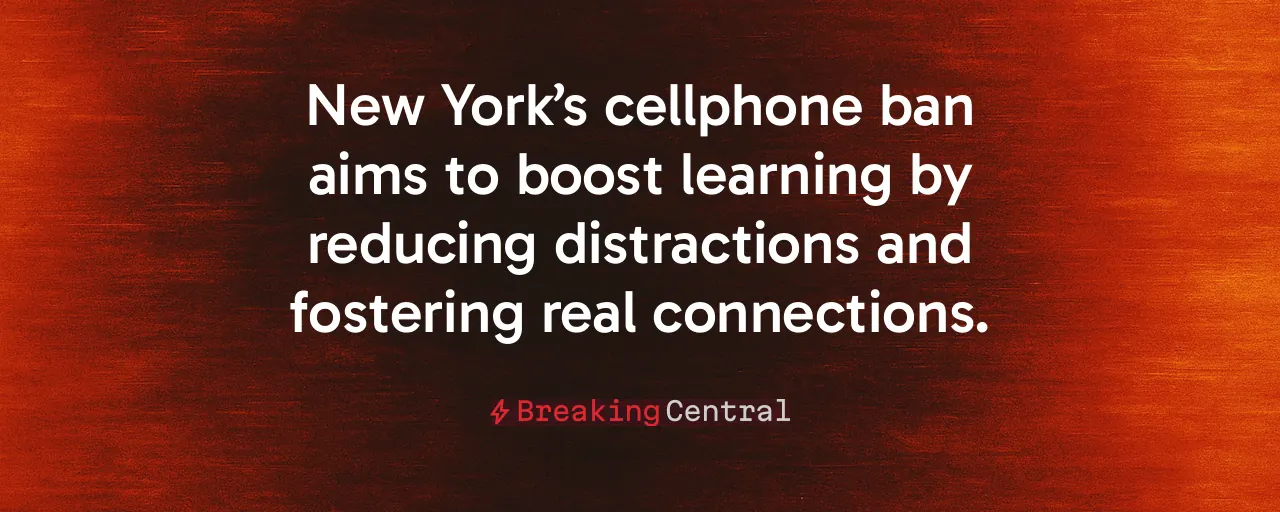A Bold Step for Classrooms
New York's public schools are on the cusp of a transformation. Governor Kathy Hochul's bell-to-bell cellphone ban, rolling out this fall, offers kids a break from the digital overload that's taken over their lives. As a parent, I've watched smartphones pull children away from real conversations and genuine learning. This policy, positioning New York as the largest state to bar phones in K-12 schools, is a powerful move to restore focus and connection in education.
Hochul, in a recent TV appearance, captured the heart of the issue. Students no longer chat in lunchrooms; they scroll in silence. Teachers struggle to compete with social media. The evidence is clear: smartphones disrupt learning and weaken social bonds. New York's ban, driven by a governor who understands the crisis, sets a standard for other states to adopt.
This policy centers on a simple truth. Schools exist to teach kids how to think, engage, and grow, fostering active participation and preventing them from zoning out on screens. When did we accept that checking notifications is more important than mastering math? New York's ban draws a firm line, prioritizing education over distraction.
Hard Evidence, Clear Benefits
Those who question the ban's scope may argue it goes too far, but research tells a different story. A London School of Economics study of 130,000 students showed phone bans lifted test scores by 6.4 percent, with struggling students gaining up to 14 percent. In the U.S., a Bronx high school's phone-free policy boosted Advanced Placement pass rates in just one year. A 2024 PISA study found students distracted by others' screens lost 15 points in math scores.
The mental health toll of phones is just as stark. King's College London research linked heavy smartphone use to doubled anxiety risks and nearly tripled depression odds, especially for girls. The WHO's 2024 survey connected addictive social-media habits to less sleep and riskier choices. New York's ban tackles this head-on, shielding kids from apps designed to hook them.
Social development suffers, too. A 2022 Ontario survey found one in five high schoolers showed problematic tech use, doubling their risk of low grades and cutting their sense of school belonging. Students hide behind screens, losing the confidence to talk or connect. By keeping phones out of schools, New York gives kids a chance to rebuild those essential human skills.
Countering the Critics
Some parents worry about losing contact with their kids in emergencies. Others fear bans limit personal freedom. These concerns deserve attention, but they don't outweigh the benefits. Schools already manage urgent communications through office lines and staff. Student phone use primarily involves social media, rather than safety concerns. As for freedom, schools are places to learn responsibility and focus, where unchecked screen time has no place.
Certain educators advocate for using phones as learning tools, arguing that guided tech prepares kids for a digital future. Yet this overlooks a key reality. Kids are already immersed in technology outside school. Classrooms should be a refuge where they hone real-world communication, not another place to stare at screens. New York's clear rule—no phones all day—puts learning first, avoiding the pitfalls of half-measures.
A Model for Every State
New York's approach offers a roadmap for others. Florida, for instance, implemented phone restrictions in 2023. Indiana's all-day bans cut discipline referrals by 34 percent. Ontario's K-6 ban led to 41 percent less bullying. These results show what's possible when phones are out of the equation. New York's scale makes it a beacon for nationwide change.
Getting it right takes effort. Hochul's plan lets districts tailor enforcement, steering clear of harsh punishments like suspensions. Tools like lockable pouches or caddies keep costs low. While some parents raise valid concerns about emergencies or special-needs students, targeted exemptions can address those without undermining the policy. The real danger is inaction—allowing phones to erode focus, grades, and well-being.
This matters to me as a parent. I want my children to grow up engaged, confident, and free from the constant tug of algorithms. New York's ban paves the way for that future. Why aren't more states doing the same?
Securing a Brighter Future
New York's cellphone ban sends a clear message: our kids deserve classrooms that prioritize learning and connection. It challenges the notion that tech companies should shape how children spend their school days. By enforcing a phone-free environment, the state empowers teachers, safeguards mental health, and helps students rediscover real relationships.
The risks of inaction are too great. If phones dominate schools, we face a generation too distracted to learn, too anxious to grow, and too isolated to lead. New York's policy offers a better path, one that values education and human interaction. Other states need to step up and follow this lead—the well-being of our children hangs in the balance.
Parents, engage with your kids about this change. Schools, hold the line. Policymakers, take action. New York's ban proves we can put kids first. Let's make phone-free schools the norm across the country and give our children the chance to thrive.
